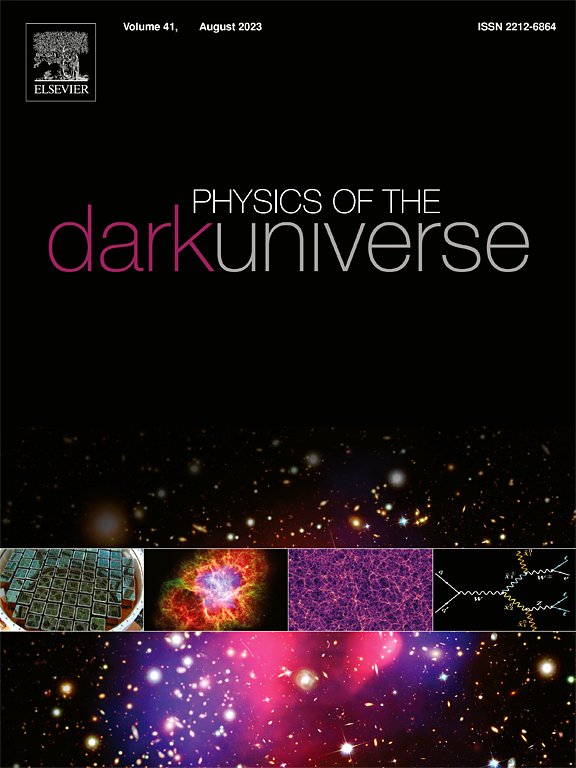Reconstructing cosmic expansion in f(R,G) gravity using a log-periodic deceleration model
IF 6.4
2区 物理与天体物理
Q1 ASTRONOMY & ASTROPHYSICS
引用次数: 0
Abstract
We study the late-time cosmology in , using a logarithmic parametrization of the deceleration parameter . The Hubble parameter is reconstructed and model parameters are constrained via MCMC analysis using CC (31), BAO 15+DESI DR2 BAO and Pantheon+SHOES (1701) datasets. Our results yield a Hubble constant in the range –72.8 km/s/Mpc, consistent with late-time observations. The present deceleration parameter is found to be to , while the evolution parameter , indicating increasing acceleration. The transition redshift shifts from (CC) to 0.744 (CC+BAO+Pantheon+SHOES), supporting a dynamic acceleration phase. The model reproduces early radiation behavior with and predicts present-day values . Energy conditions NEC and DEC are satisfied, while SEC is violated at late times. The statefinder parameters lie near the CDM point. Estimated age of the Universe ranges from 13.01 to 13.59 Gyr. Thermodynamic analysis confirms consistency with the generalized second law. Furthermore, linear perturbation analysis of the energy density and Hubble parameter demonstrates that fluctuations remain bounded across the cosmic timeline, which ensures the dynamical stability of the model. Overall, the framework provides a viable, stable, and observationally consistent description of cosmic acceleration.
利用对数周期减速模型重建f(R,G)重力下的宇宙膨胀
利用减速参数q(z)=q0+q1sin[log(1+z)]的对数参数化,研究了f(R,G)=R+αR2+βeγG的晚时宇宙学。利用CC(31)、BAO 15+DESI DR2 BAO和Pantheon+SHOES(1701)数据集重构了哈勃参数H(z),并通过MCMC分析对模型参数进行了约束。我们的结果得出哈勃常数在H0= 71.7-72.8 km/s/Mpc范围内,与后期观测结果一致。目前的减速参数q0=−0.484 ~−0.517,演化参数q1≈1,表明加速度增加。过渡红移从ztr=0.879 (CC)转移到0.744 (CC+BAO+Pantheon+SHOES),支持动态加速阶段。该模型再现了ω(z>>1)≈0.33的早期辐射行为,并预测了ω0≈- 0.49的现今值。满足NEC和DEC的能量条件,而在后期违反SEC。状态查找器参数{r0,s0}=(0.866,0.046)位于ΛCDM点附近。宇宙的估计年龄在13.01到13.59 Gyr之间。热力学分析证实了它与广义第二定律的一致性。此外,能量密度和哈勃参数的线性摄动分析表明,涨落在宇宙时间线上保持有界,这保证了模型的动力学稳定性。总的来说,这个框架提供了一个可行的、稳定的、观测上一致的宇宙加速描述。
本文章由计算机程序翻译,如有差异,请以英文原文为准。
求助全文
约1分钟内获得全文
求助全文
来源期刊

Physics of the Dark Universe
ASTRONOMY & ASTROPHYSICS-
CiteScore
9.60
自引率
7.30%
发文量
118
审稿时长
61 days
期刊介绍:
Physics of the Dark Universe is an innovative online-only journal that offers rapid publication of peer-reviewed, original research articles considered of high scientific impact.
The journal is focused on the understanding of Dark Matter, Dark Energy, Early Universe, gravitational waves and neutrinos, covering all theoretical, experimental and phenomenological aspects.
 求助内容:
求助内容: 应助结果提醒方式:
应助结果提醒方式:


